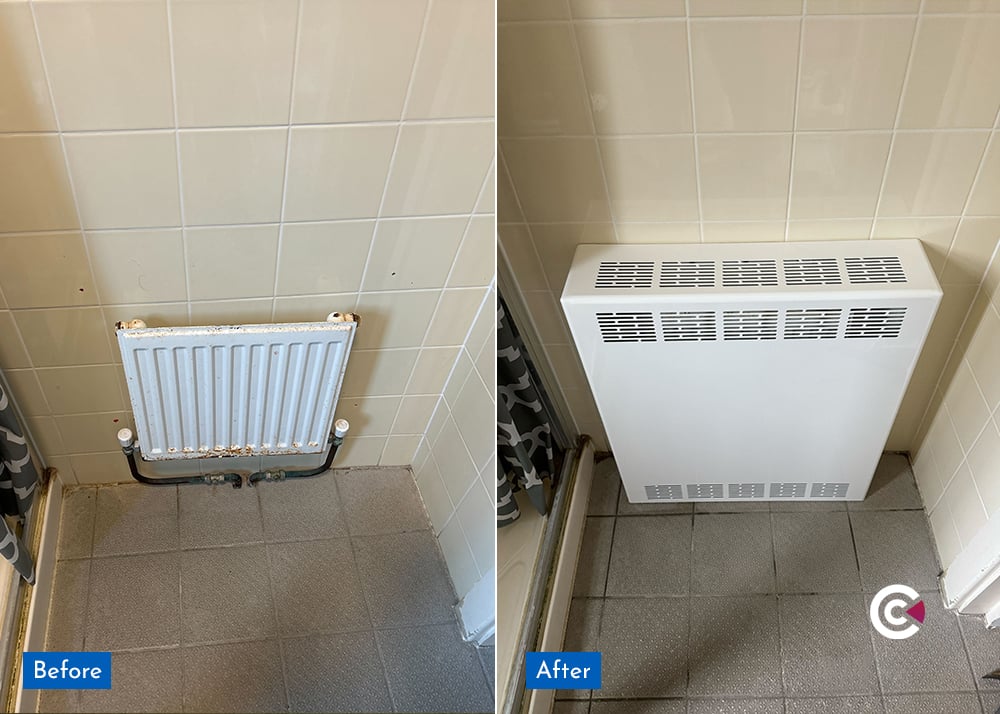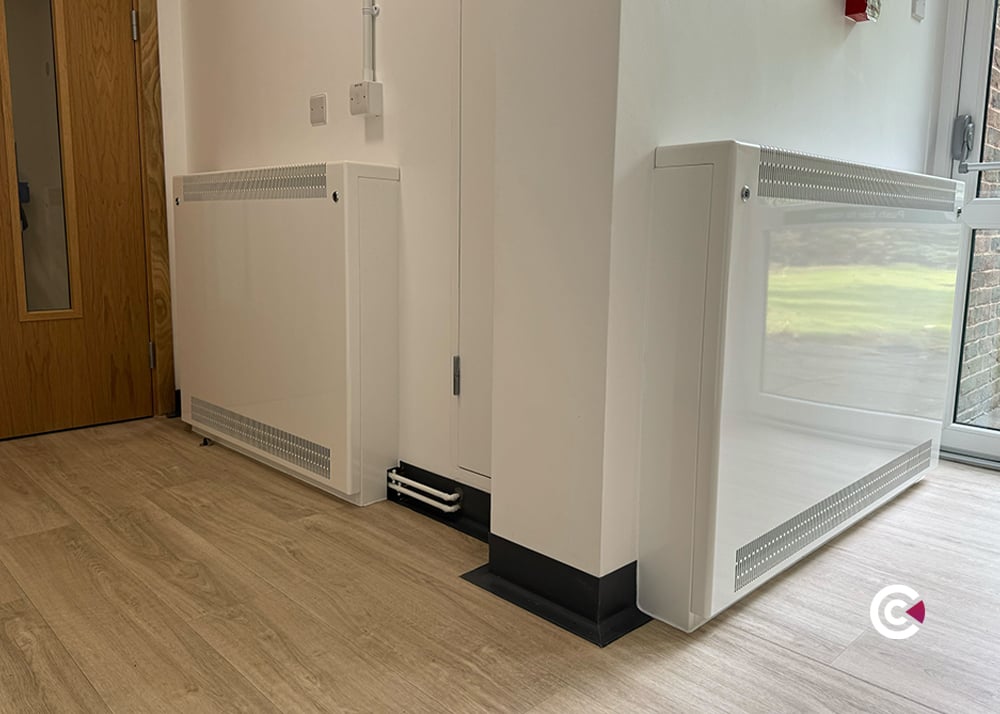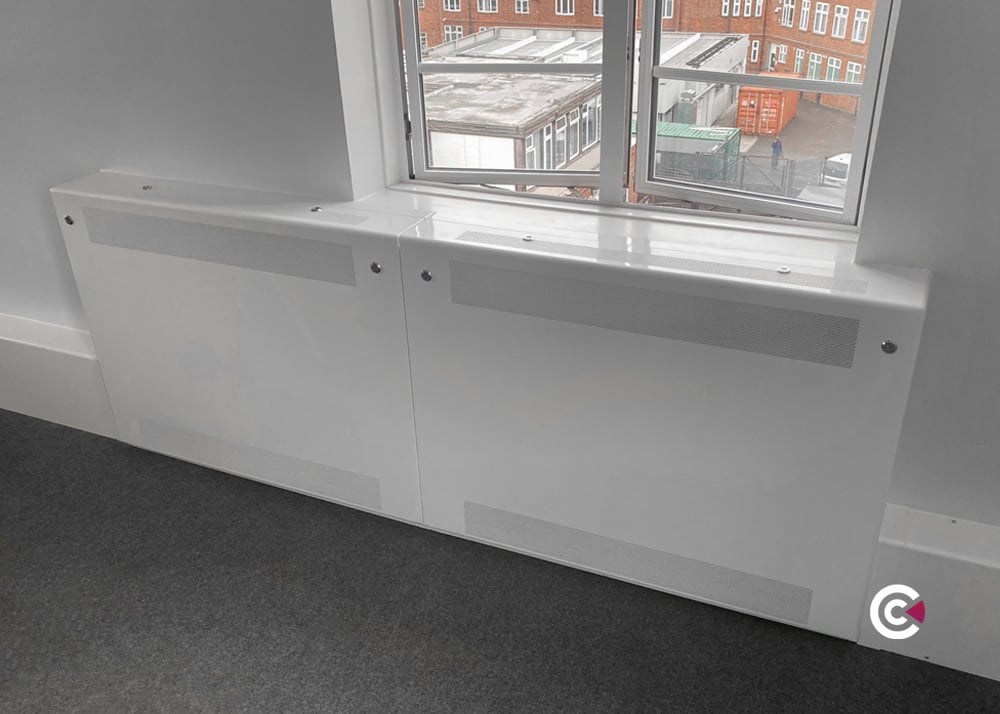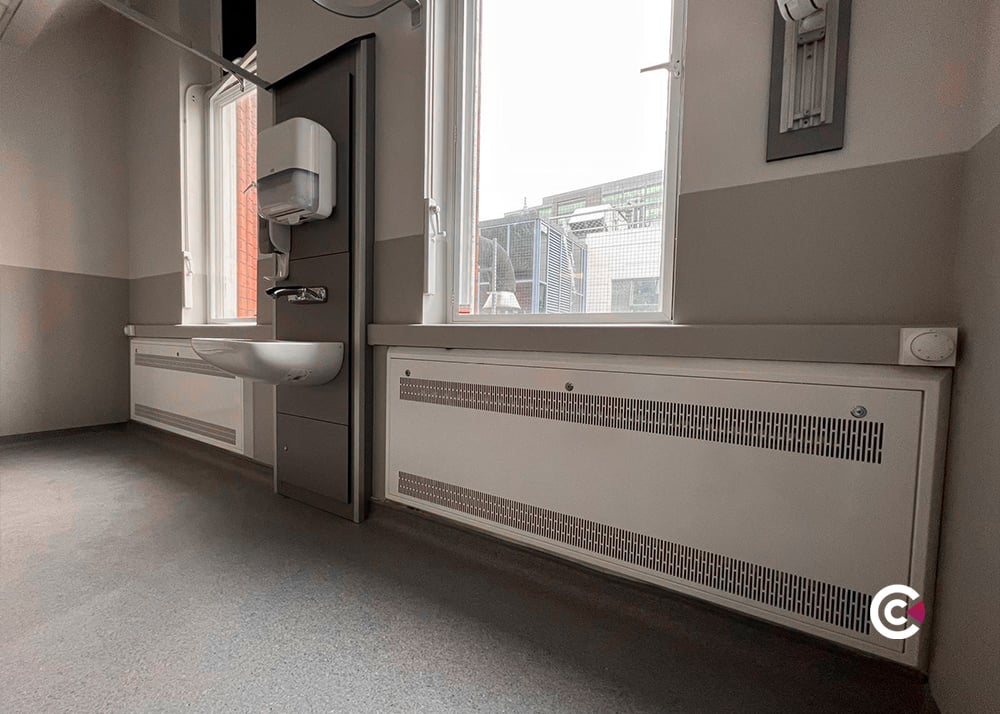In all healthcare and residential environments, safety is a driving factor in the types of resources you choose to specify. Central to these core aims is the need to prevent avoidable errors and patient harm. This means that all components of a care home perform to a high standard, for the benefit of those receiving care, whether in a short-term or long-term capacity.
Contour’s successful delivery of LST radiators in care home projects over the UK has allowed them to develop a comprehensive understanding of the occupier’s needs.
This post sets out to highlight their findings, allowing architects and specifiers to make appropriate choices during the design and specification phase of a project.
It’s important to note that the most effective specifications are the ones that adopt a holistic approach. Research suggests that the User’s physical and mental well-being is of equal importance; both working together. Therefore, specifiers must look beyond the obvious safety features of radiators and seek to consider design characteristics and aesthetic appeal, too.
Low Surface Temperature (LST) Radiators
LST radiators are critical in any environment that involves a level of care, and where safety is of a high priority. Complying with NHS Estates Health Guidance Notes 1998, LSTs are designed not to exceed a surface temperature which is deemed unsafe to touch. In most cases, this is 43°C.
In 2010, shocking statistics emerged, highlighting that 1,970 people were injured in a public building due to contact with a radiator or section of hot pipework. As a result, more and more specialist facilities are looking at ways to reduce the surface temperature of their radiators, whilst maintaining efficient heat output.
The Dangers Of Standard Radiators In Care & Nursing
Despite the alarming figures highlighted above, reports suggest that not all care and nursing establishments are complying with those official recommendations, which have resulted in serious-and in some cases-fatal consequences.
In 2017, the CQC prosecuted a care home provider for failing to provide safe care and treatment, which resulted in avoidable harm to a 79-year old woman.
The woman in question suffered serious burns from prolonged contact with an uncovered radiator. She was found to have a large burn to her back, and skin was visible on the uncovered radiator, which resulted in months of rehabilitation. Source
In a heart-breaking incident back in 2012, an elderly care home resident died of severe burns after falling and becoming trapped between a wardrobe and a radiator. A Health and Safety Executive (HSE) investigation found the pipes and valves at the home, owned by Western Park Leicester Ltd, were not covered and had temperatures of around 73 degrees centigrade.
Recent incidences like this are a stark reminder that specifiers need to closely consider the safety features of radiators to ensure they don’t exceed a temperature that is deemed unsafe to users.
Design Considerations For LST Radiators
Aside from a safe, low surface temperature, Contour’s LST radiators have numerous safety benefits that we will aim to highlight below. When specifying radiators, it’s important to consider additional features that help to provide exceptional levels of care.
Built To Last
Care homes can be subjected to high traffic, depending on the time of the day. Due to the busy nature of these environments, a robust radiator is a necessity.
Paired with continual use of equipment such as:
- Hoists (standing hoists, mobile hoists, bath hoists etc)
- Slide sheets
- Transfer boards
- Wheelchairs
- Various walking aids
- Bariatric equipment
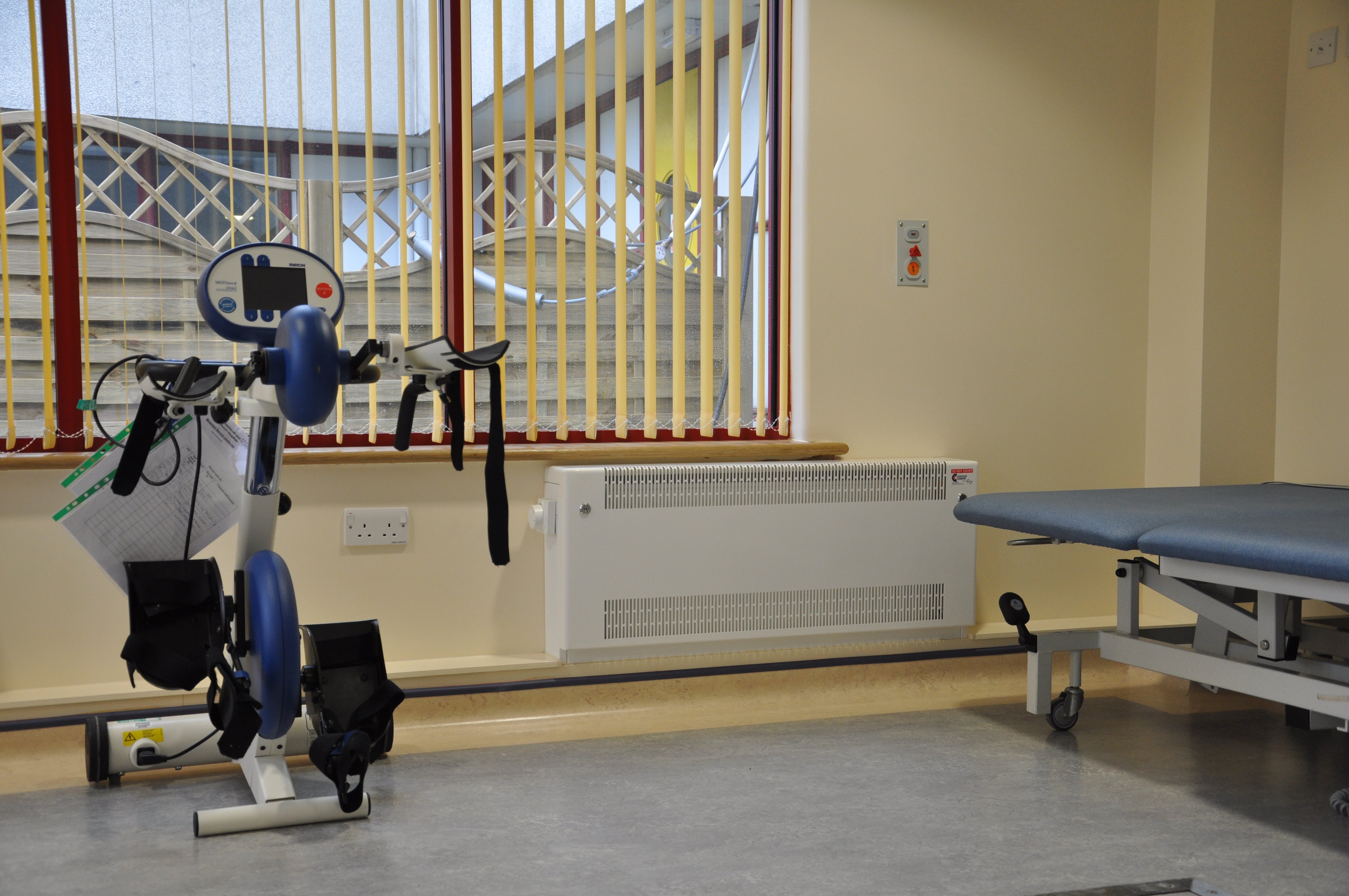
It’s essential that your radiator is built to withstand a variety of demands over time. Contour’s DeepClean LST radiator guards are built with 1.5mm Zintec steel, which can be increased to 2mm in the most challenging of environments
If you require a radiator guard in a humid or wet location, such as a shower or wet room, Contour’s LST radiator guards can be manufactured with Magnelis Steel. Read more about Magnelis Steel.
No Sharp Edges
When elderly residents are unsteady on their feet, they become vulnerable to trips and falls. In this instance, you’ll want to ensure that their landing is as risk-free as possible. Due to Contour’s LST radiators having bullnose corners and radius edges, a risk of injury through fall is mitigated.
To quote Older Person’s Care Home Design Principals, 2015,
“The physical environment must be “care ready” and ‘enabling’ in terms of the likely progression of impairments and long-term conditions residents will experience with increasing age and frailty”.
The design of standard radiators can often pose a risk due to the sharp corners of the radiator’s casing. That, paired with the pointed external TRVs, can lead to avoidable harm.
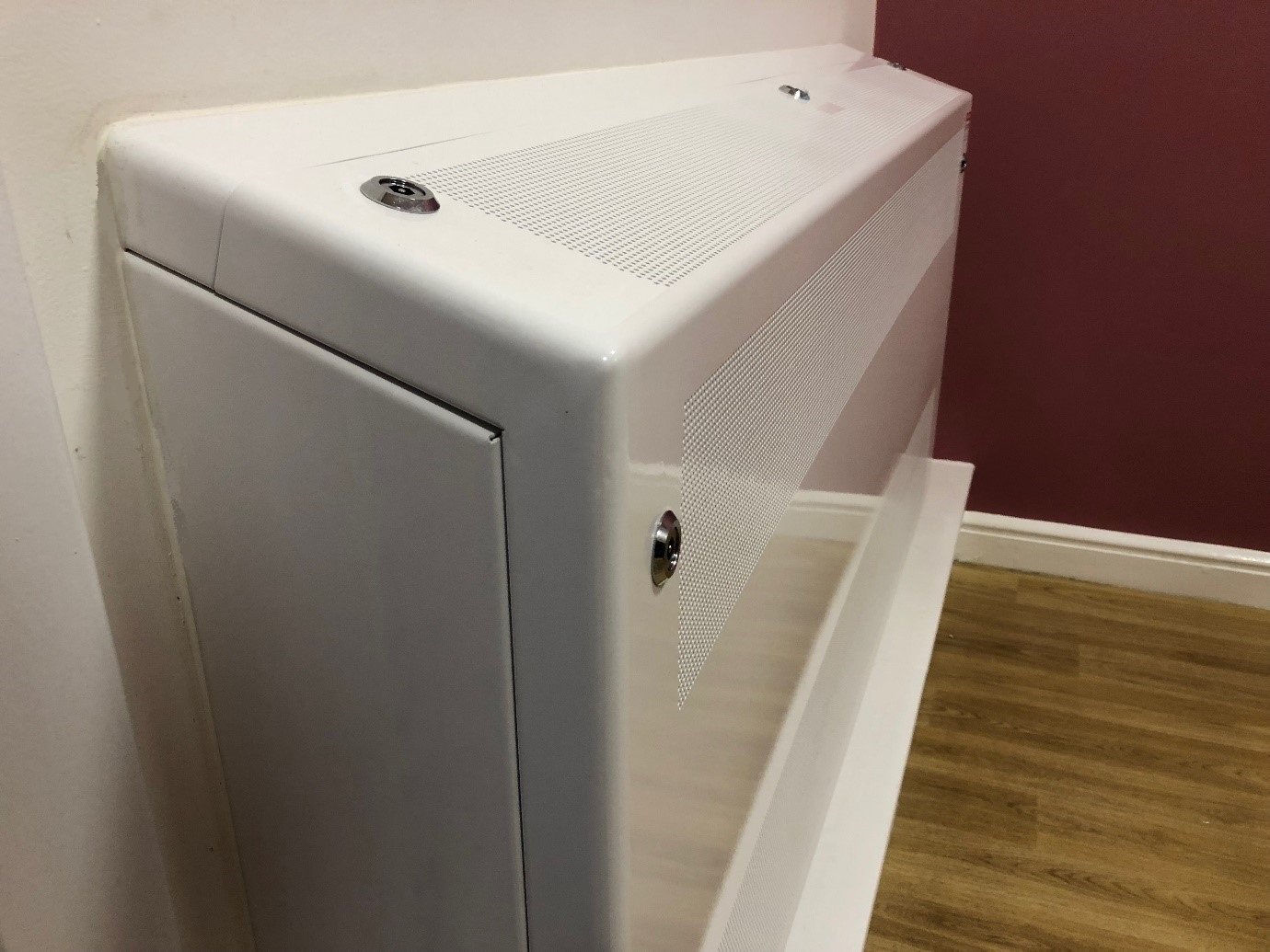
Easy Access For Cleaning
The NHS National Patient Safety Agency highlights the importance of infection prevention and control to ensure that people who use health and social care services receive safe and effective care. The report goes on to emphasise that effective prevention and control of infection must be part of everyday practice and be applied consistently by everyone.
Achieving that level of consistency can be a challenge when dealing with the demands of the care and nursing environment. Therefore, the need for quick-yet thorough-cleaning is essential.
Here we look to Contour’s DeepClean LST radiator’s unique design, which can be paired with a Rotarad rotating valve kit. The valve kit allows cleaning operatives to bring the radiator down to floor level, giving access to the back of the radiator and wall behind it.
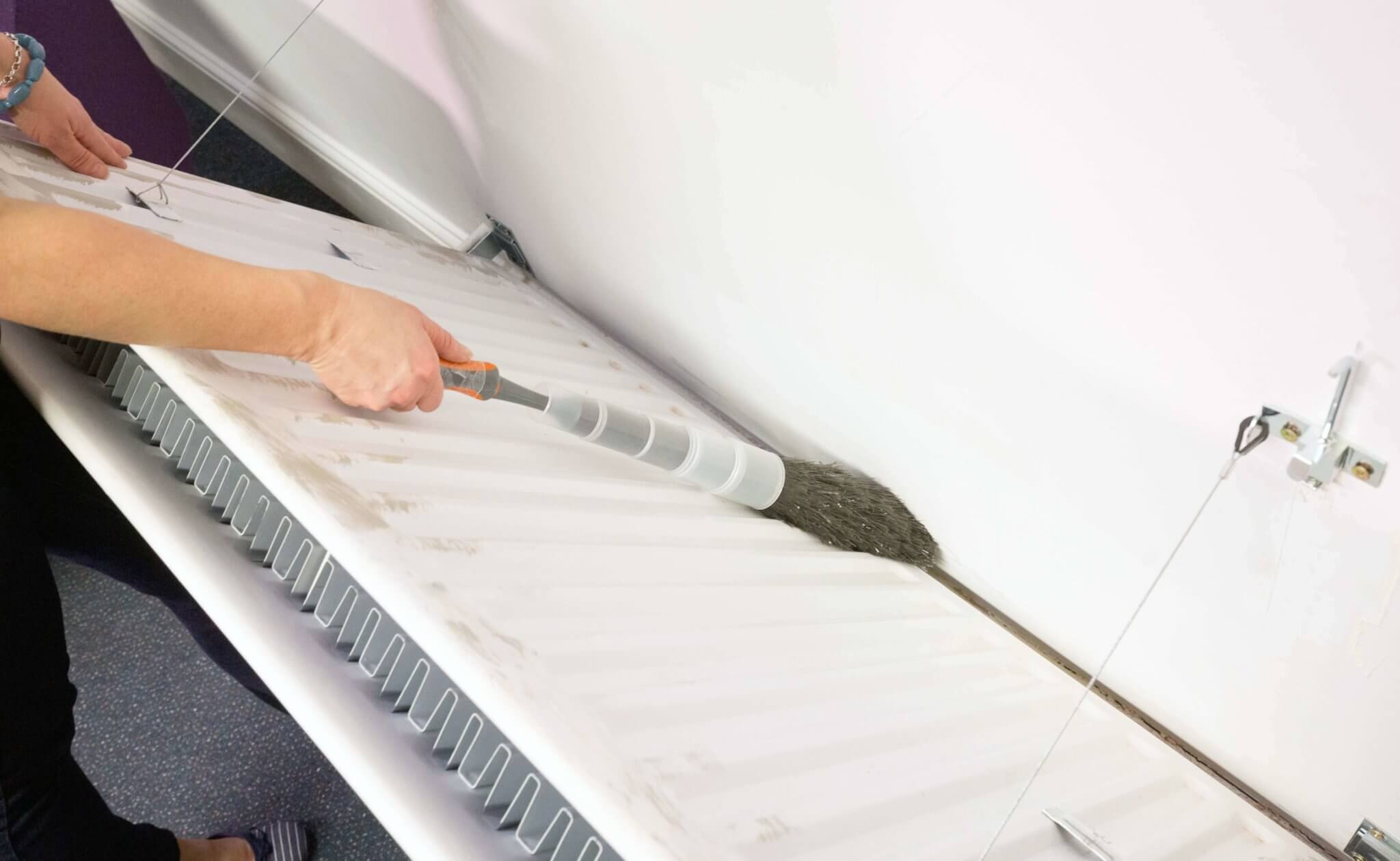
The area behind a radiator is known for dust and bacteria build-up, but standard radiators tend to be large, obtrusive and difficult to clean. For thorough cleaning, they require complete disassembly with assistance from estates personnel – a time-consuming, costly and disruptive process.
The DeepClean radiator design makes it possible for a single cleaning operative to access every internal and external surface of the radiator guard without any support from a Facilities or Estates department. This significantly improves cleaning efficiencies, helps reduce overheads and importantly raises hygiene standards.
Infection Control
Within the Healthcare sector, there have been numerous incidences of the spread of Healthcare Associated Infections (HCAIs). In an environment where infection can have potentially fatal consequences, the need to limit this risk is crucial.
According to the NHS Estates (2002) Infection Control in the Built Environment guidelines,
“Covered heat emitters raise the most infection control concern. Heat emitter covers allow dust to build up beneath and inside the grille. The dust has been found to contain MRSA and other potentially pathogenic organisms. When emitters are turned on during the winter, dust and bacteria are dispersed by convection to the ward area…estates departments have had to prioritise their resources in line with decreasing budgets.”
Incorporating BioCote® anti-microbial protection as standard into the paintwork of all LST radiators and guards, Contour provides effective and permanent protection to the surface of the radiator and guard, preventing the growth of harmful microbes such as bacteria and fungi.
Regular QC testing and on-site field studies commissioned by Contour demonstrate a reduction of 99.96% in dangerous bacteria and infection such as MRSA and E.coli in less than 2hrs.
LST Radiators For Dementia Sufferers
Due to the varying needs of care home residents, consideration needs to be placed on the design of equipment, furniture and resources.
According to Alzheimer’s Research UK, there are approximately 311, 730 people with dementia living in care homes across the UK. This accounts for 60% of people currently receiving care.
The complexity of the disease means that suffers can exhibit unpredictable behaviours, compromising their safety. Whilst Dementia is a broad term used to describe a number of different conditions affecting the brain, common symptoms include memory loss, confusion, disorientation and various sensory challenges.
One of the biggest challenges for those suffering from the later stages of the disease is the inability to recognise when they’re at risk.
That is why standard radiators pose a particular danger due to the hot surface temperatures that they could potentially reach. Standard panel radiators emit a surface temperature 80°C, which is considered a severe burn risk and the reports highlighted above speak for themselves.

Individual Radiator Design
Since care and nursing homes are likely to become the resident’s home for the rest of their lives, provision of a pleasant environment that promotes well-being is highly important.
We’re all aware that people in these situations spend prolonged periods of time in confined spaces, so the design choices you make are, arguably, of equal importance to the care resources that you provide.
At this stage, it’s important that the architect specifies for quality and innovation, as opposed to cheapness and practicality.
Wooden Radiator Covers
Here we turn to wooden radiator covers, as they are a common choice in care and nursing environments. This is due to a range of factors including cost, painting options and aesthetic appeal.
However, wooden radiator covers aren’t without their limitations, which have become apparent throughout the varying projects that Contour has been involved in. As chipboard is a week material that absorbs water, it makes it difficult to achieve a thorough clean.
When specifying radiators, you need to be assured that they are up to standard and can meet the demands of a care environment, which is why we advise a metal radiator or cover to withstand those demands.
Radiator Personalisation Options
You may assume that metal LST radiators and covers don’t provide much in the way of personalisation. However, you can apply your colour choices to our LST and Anti-Ligature radiators and covers, with wide variety of options.
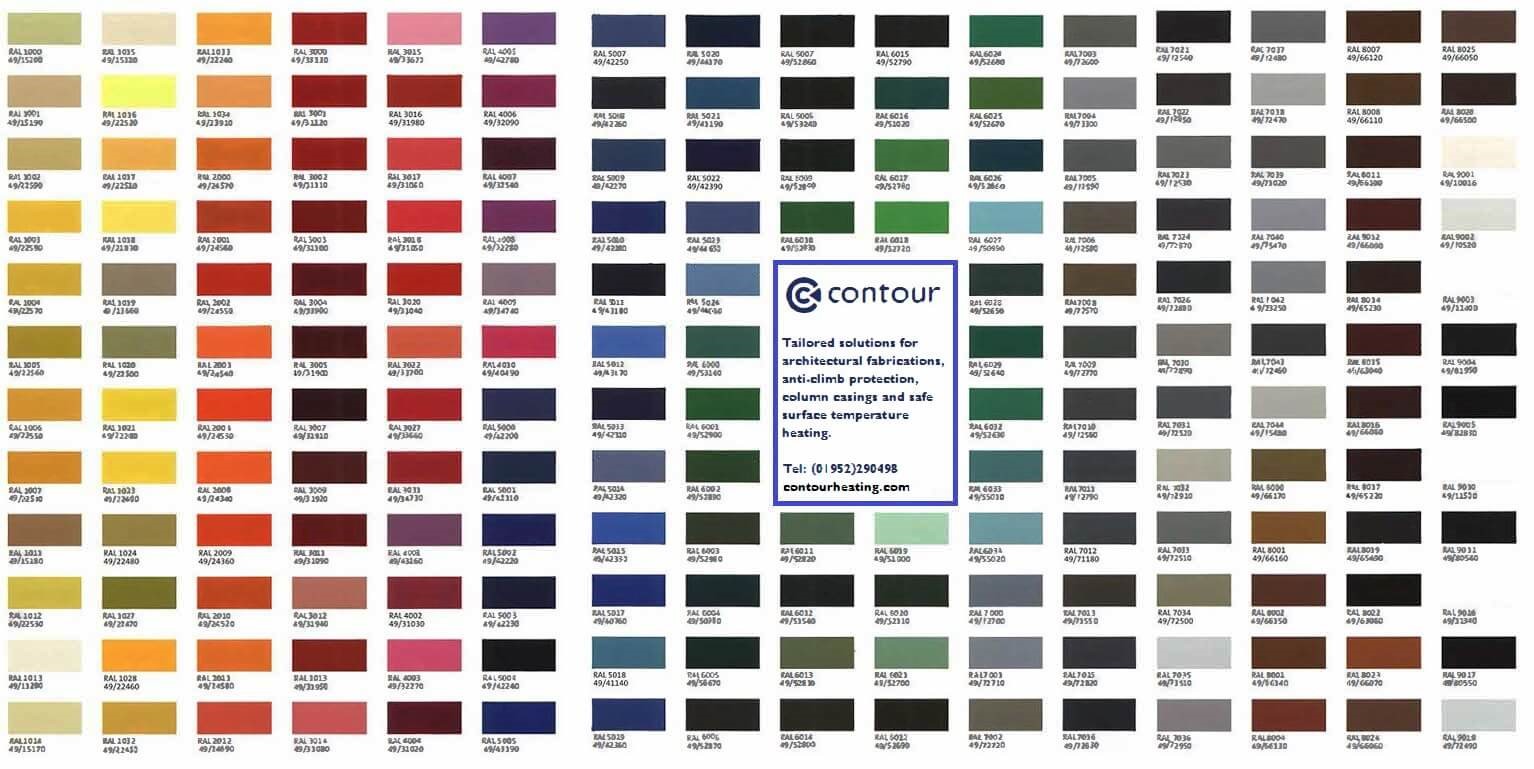
The Impact Of Colour In Care & Nursing
Healthcare professionals often observe the impact that colour has on the people in their care. It’s widely acknowledged that colour has the potential to change spaces into stimulating environments in an otherwise monotonous space.
For people with dementia, colour choice may even aid with navigation and orientation of their environment.
Providing stimulation to those receiving long-term healthcare is crucial, since the bedroom, corridor and day room may well be the only ‘journey’ that those residents make.
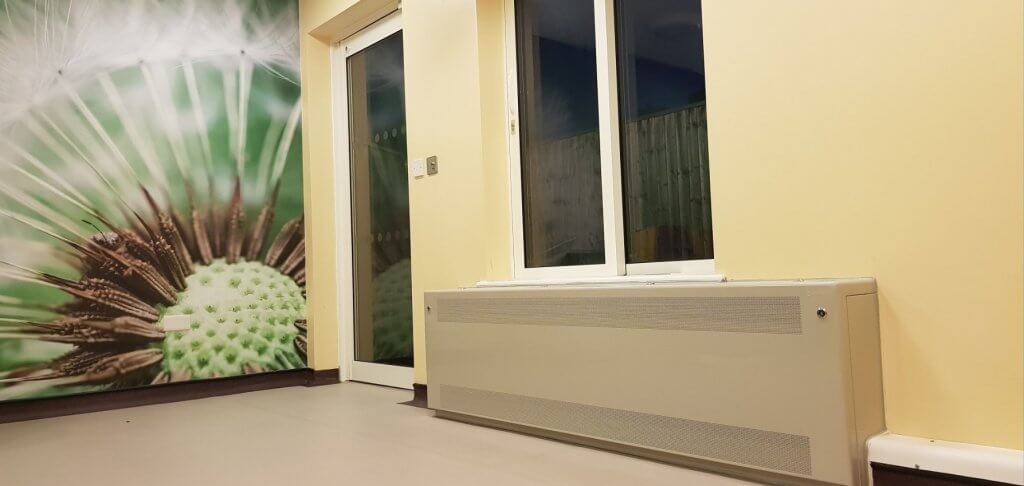
Why Colour Matters
Achieving a welcoming environment throughout your building that’s friendly and positive for users, visitors and staff can boost morale. This is something that can be achieved through careful colour consideration.
When skilfully used, colour can overcome the sensory deprivation caused from lack of stimulation-a key issue in all care and nursing environments.
Depending on residents’ individual circumstances, they may have experienced recent emotional upheaval-particularly if they are new to this environment-meaning that they may me more receptive to the emotional stimuli of colour and lighting.
Get your free colour psychology book here
Conclusion
Effective care looks beyond the immediate and obvious safety features that many common LST radiators have. When specifying radiators and radiator guards for care and nursing homes, a holistic approach is necessary. By focussing on a range of factors from physical to mental, you’re ensuring that Users are receiving the best care possible.
If you’d like any more information on why LST radiators and guards are essential in care and nursing, get in touch with one of our experts today.
About Us
Contour produces a range of innovative, safe surface temperature systems for healthcare, education, mental health, commercial and secure sectors, working in close partnership and collaborating with architects, M&E engineers, NHS Trusts, local authorities, design consultants and contractors to deliver outstanding safe heating solutions.
Contour is the exclusive partner of BioCote® anti-microbial technology for LST and anti-ligature radiators. BioCote® additives reduce bacteria by up to 99.9%. Contour combines an extensive range of colour-paints is with BioCote® for a durable, high-quality finish.
Contour’s heating solutions offer secure, single-person quick access to radiator guard interiors for regular deep cleaning and maintenance. Each year, Contour save the NHS millions of pounds in cleaning costs, therefore delivering.
-1.png)


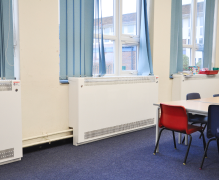
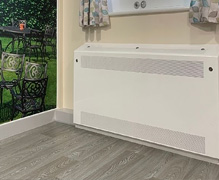
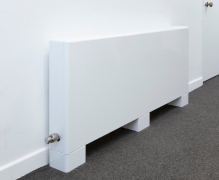
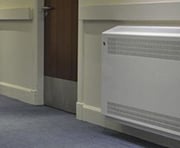
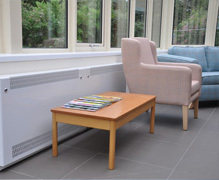

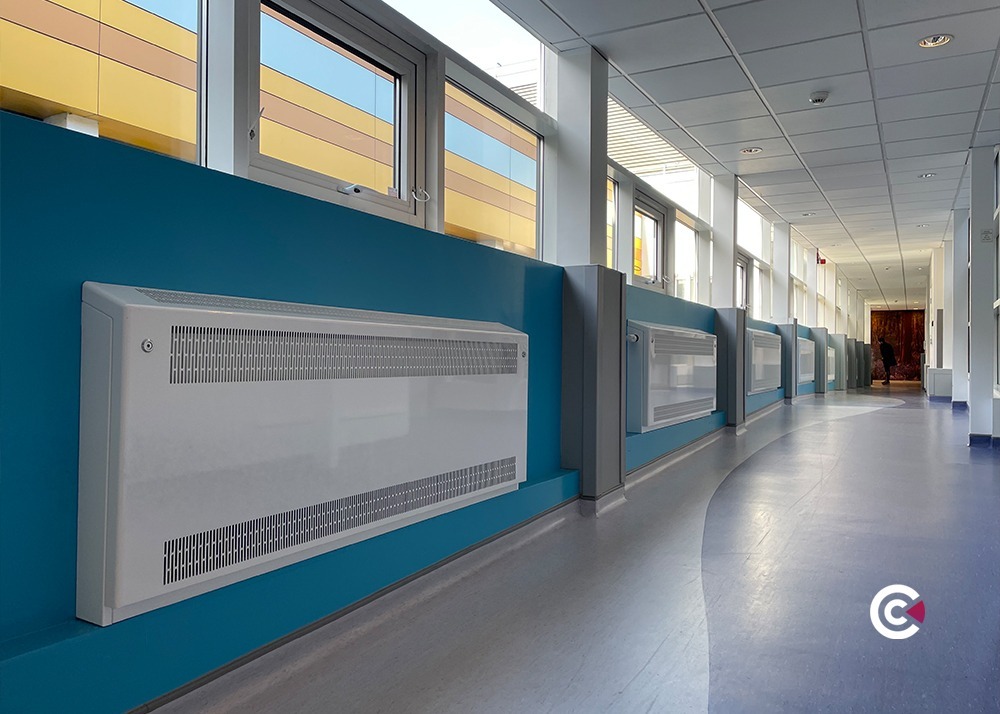
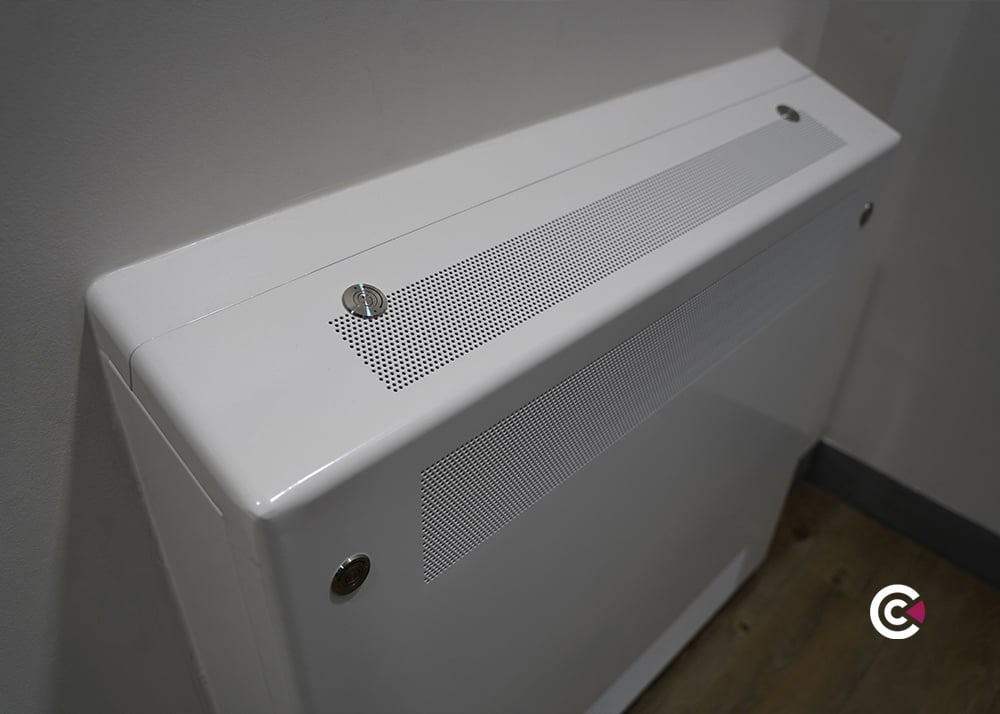

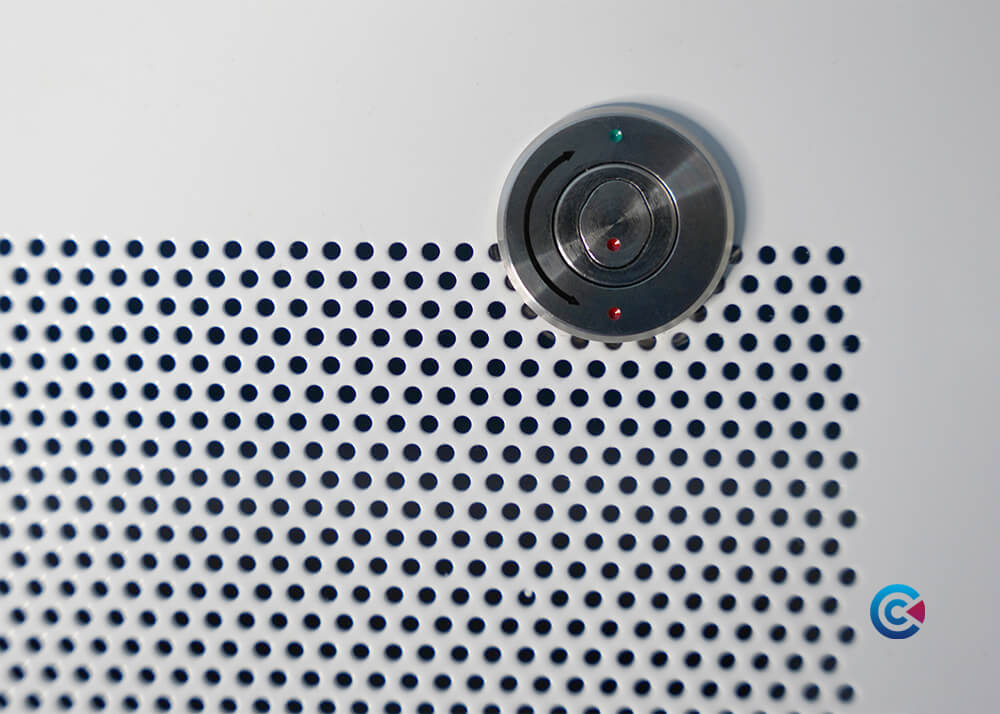



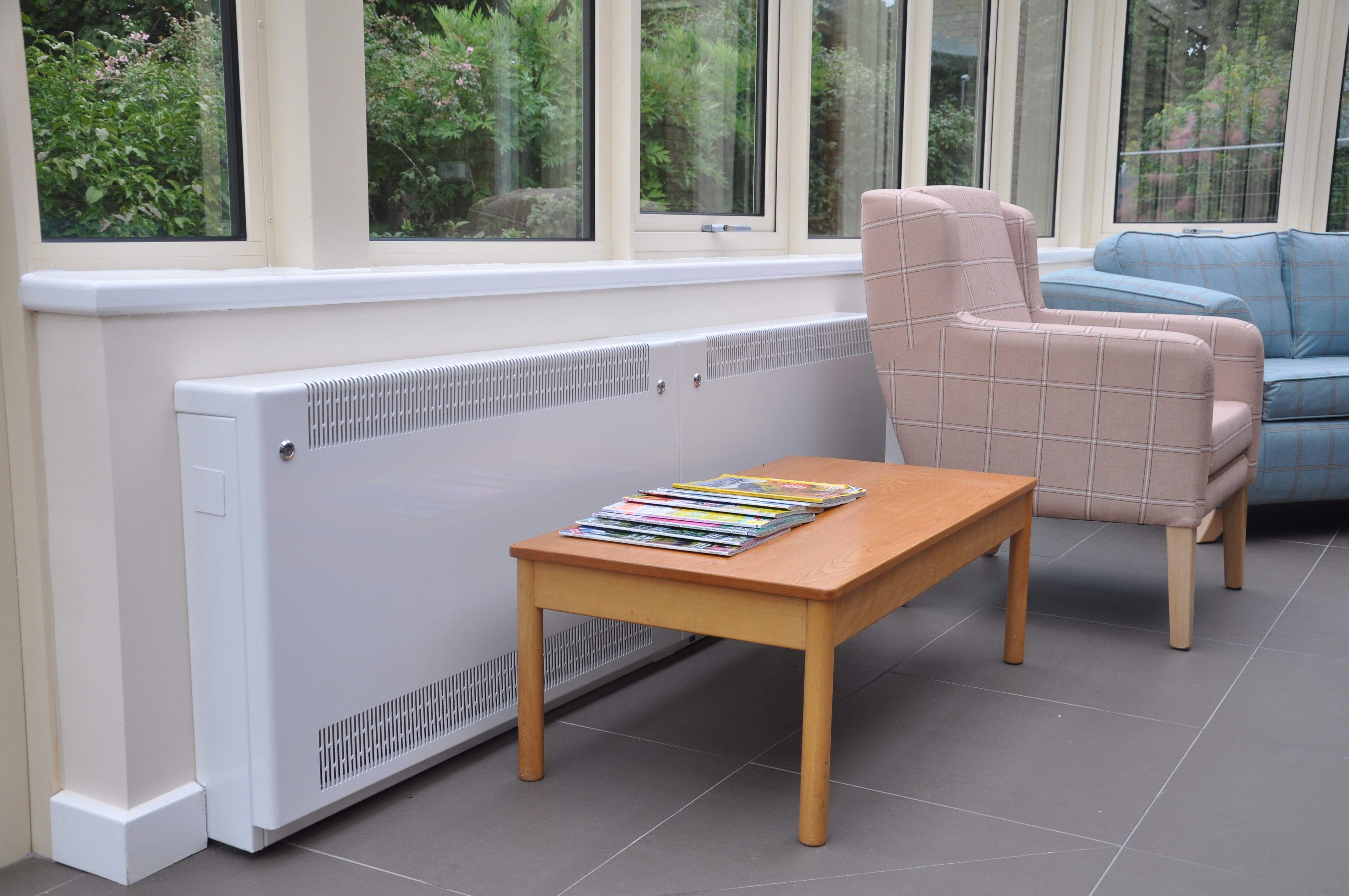

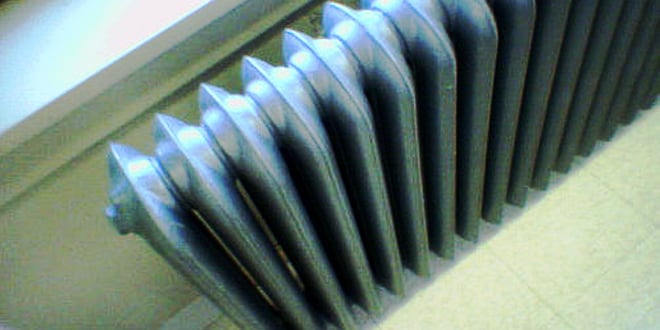
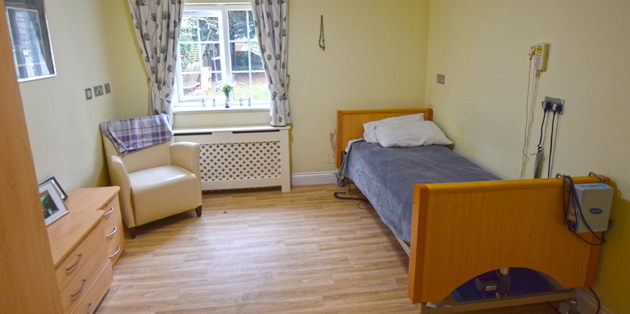

/anti-ligature%20vent%20grilles.jpg)

